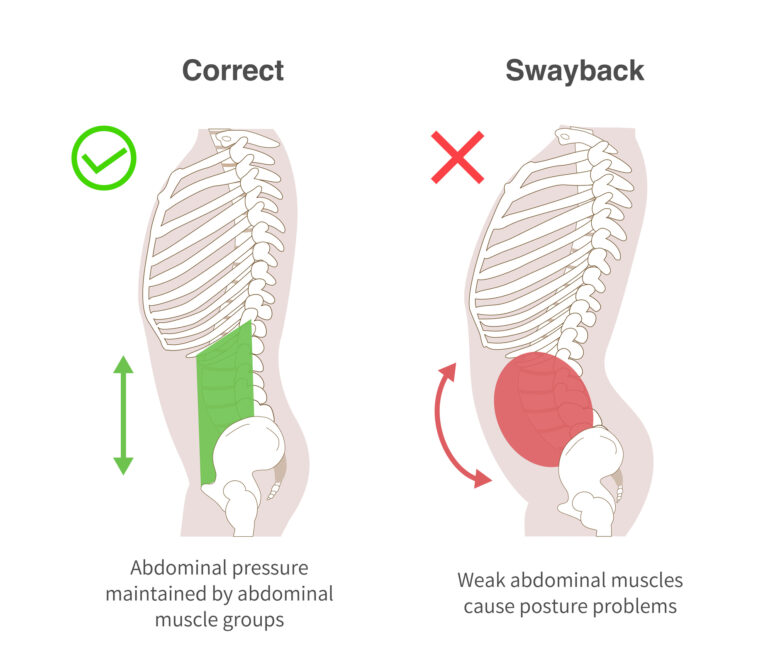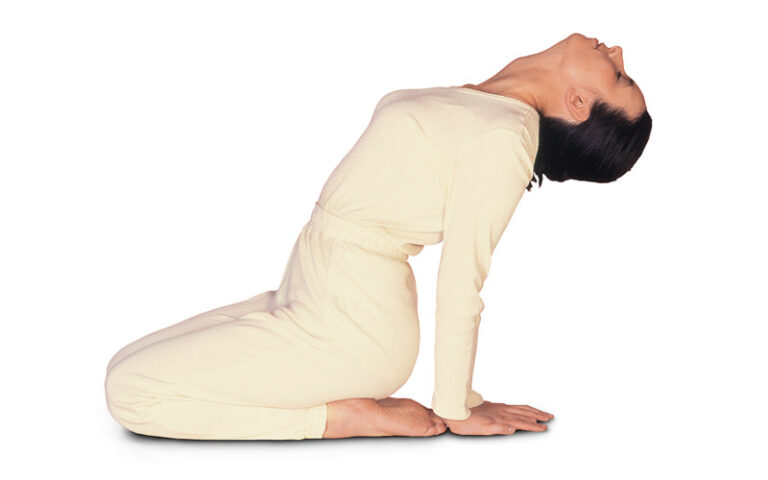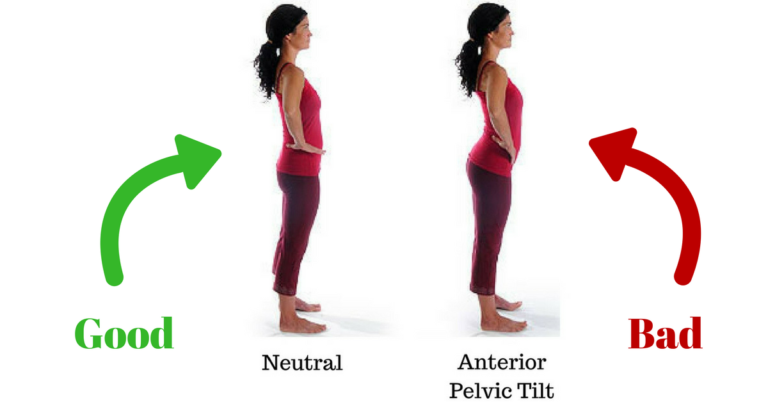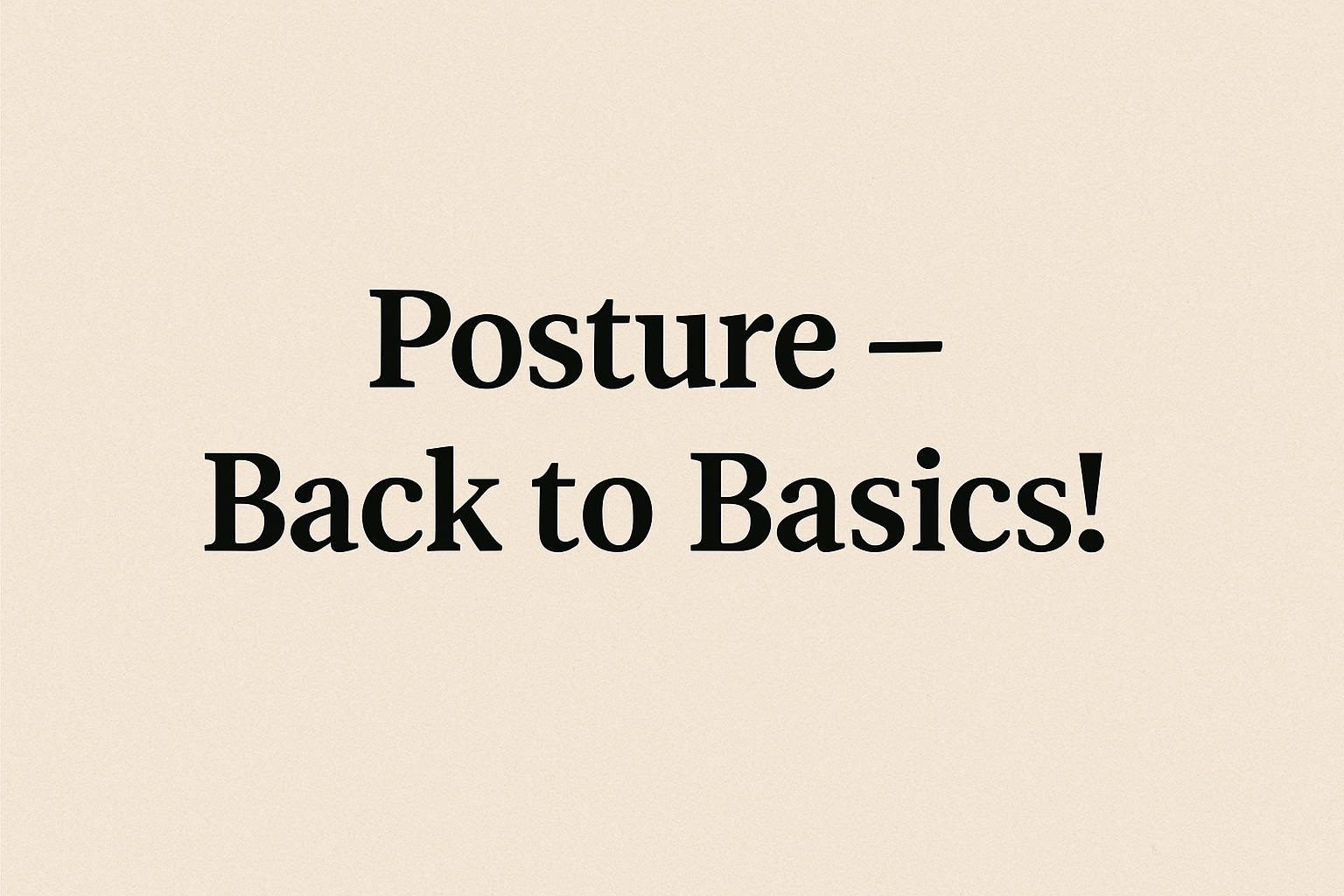
Stop Standing Up Straight – Do This Instead |Posture Doctor
When the normal lumbar (lower back) curvature becomes exaggerated and the pelvis tilts forward (anterior pelvic tilt), you have a condition known as hyper-lordosis, or swayback posture. It is frequently the result of long-term efforts to “sit up straight” or “stand up straight.” It can also stem from stresses encountered in extreme physical activities such as gymnastics, ice skating and ballet, and even from some extreme postures found in yoga.

You are at greater risk of swayback posture if you have had multiple pregnancies, if you are overweight, or if you sit for long periods.
The conventional remedy for swayback posture is to intentionally tuck the pelvis – consciously tilt it back, in order to flatten the lower back curve – but this can cause further problems. It is true that tucking the pelvis usually flattens a swayback; it often feels good too, because it stretches out the low back muscles. Unfortunately tucking the pelvis also compresses and compromises the lower spinal discs.
Learn to tuck your ribs
A better way to address a swayback is to learn how to tuck the ribs. Imagine your ribcage to be a giant vertical egg. Tucking the ribs involves rolling your ribcage (egg) forward, so as to make the lower border of the ribcage sit directly over top of the pelvis. Re-aligning the ribcage lengthens the lower back, causing your swayback curve to flatten to a more normal position.
Unfortunately this rib tuck exercise is usually quite difficult for those who need it most. If you have been suffering from swayback for many years, tucking the ribcage is likely to make you feel uncomfortably hunched at first. This in turn creates a need to release your rounded shoulders and lengthen the spine from the neck. Below is a list of some of the signs and symptoms you may notice if you have swayback posture:
- weak stomach muscles
- lower back pain
- leg and buttock pain
- tight lower back, groin and hip muscles
- protruding belly
- backward-leaning stance
This list is only a guide. You may have many of these signs, or just a few. You may also have signs and symptoms not noted here. The list is simply to assist you in recognizing whether you have swayback posture.
What causes a swayback?
- Muscular imbalances
- Loose ligaments
- Long-term attempts to maintain extreme postures
- Excess body weight
Muscular Imbalances:
Many of the muscles responsible for posture and body movement are found in “pairs”. One muscle (or group of muscles) moves a body part in one direction, while the paired muscle moves the same body part in the opposite direction. The two sides of such a pair are said to be “opposers”, since the effort of one side opposes (works in the opposite direction to) the other side. The efforts of both sides of a muscle pair may also be exerted at the same time, to provide the tension and support needed to hold a body part steady in a desired position.
When one of the muscles of a pair becomes stronger than its opposer, we say that the stronger one has become dominant. Dominant muscles tend to become short, tight and over-aroused – or facilitated – neurologically. The weaker opposing muscle becomes long and under-aroused, or passive.
The dominant muscles are short, tight and often painful, while the weak muscles may appear prominent (protruding belly and pronounced bottom). Although these muscular imbalances are fairly predictable, individual differences do of course exist.

Free Posture Video Crash Course!
Discover the crazy, simple 3-step formula that will teach you how to improve your posture and flexibility like a pro. You will learn how to hardwire the habit of good posture, reduce forward head and the secret way to stop slouching. It's 100% free!
Because posture and muscular imbalances affect the way we move, problems in one area lead to problems in other areas. Swayback posture often contributes to the development of round shoulders and forward head posture.
Loose Ligaments:
Swayback posture often develops early in life. Multiple factors contribute to development of a hyper-lordosis, including injury, genetics and being born with loose ligaments and joint hyper-mobility.
In a normal body, ligaments (tough tissues that connect bones to other bones) have a natural tightness that restricts movement to within a normal range. This creates good, stable joints. Someone with loose ligaments may easily develop some degree of joint instability, predisposing the body to abnormally extreme movements and postures, and often resulting in injury.
Children with loose ligaments have a greater-than-normal range of movement; as a result, they often make great dancers, gymnasts and figure skaters, where extreme lumbar extension is regularly performed. These extreme postures commonly lead, later in life, to the problems and injuries associated with swayback posture.
Extreme Postures:
Certain sporting activities and exercises encourage over-extension of the lumbar spine, combined with frequent repetition of movements. For example:
- some extreme yoga positions
- gymnastics
- dance
- figure skating (which includes many extreme dance positions)
- exercises which repeatedly shorten hip muscles (ice skating, sprinting)
- sitting for long periods*
* In many ways, sitting works like an extreme exercise. Remaining seated with your hips flexed for hours on end may lead to short, dominant hip muscles and eventually to swayback posture.

Body Weight:
Recall that with swayback posture, the pelvis tips too far forward, and the lumbar curvature becomes exaggerated. Pregnant women (usually in the third trimester) and people who carry excess weight in the abdominal area (pot belly) are at a higher risk for swayback posture.
A pot belly puts more weight in front of the body’s centre of gravity and has the effect of tipping the pelvis too far forward, leading to hyper-lordosis or swayback posture. It goes without saying that managing weight gain is absolutely crucial to preventing the development of a sway back. One of the biggest mistakes I see people make is attempting to correct posture before losing weight. This will only lead to frustration and limited success.

During pregnancy, high levels of progesterone lead to looser ligaments. While these hormones are critical for a successful pregnancy, they also make unintended and uncontrolled extreme movements more likely, putting you at greater risk for sprains, strains and swayback posture. A strong, balanced posture leading up to pregnancy is the best prevention against future posture problems.
Being able to recognize the problems associated with your swayback posture, and practicing exercises tailored to your specific posture needs, is the key to maintaining ideal posture.
Regaining attractive, youthful posture should be the goal of anyone who wants to enjoy a healthy, active life, improve confidence and body image and ultimately slow the effects of aging.















